The Deer stone from Ordakul
The neverending hunt
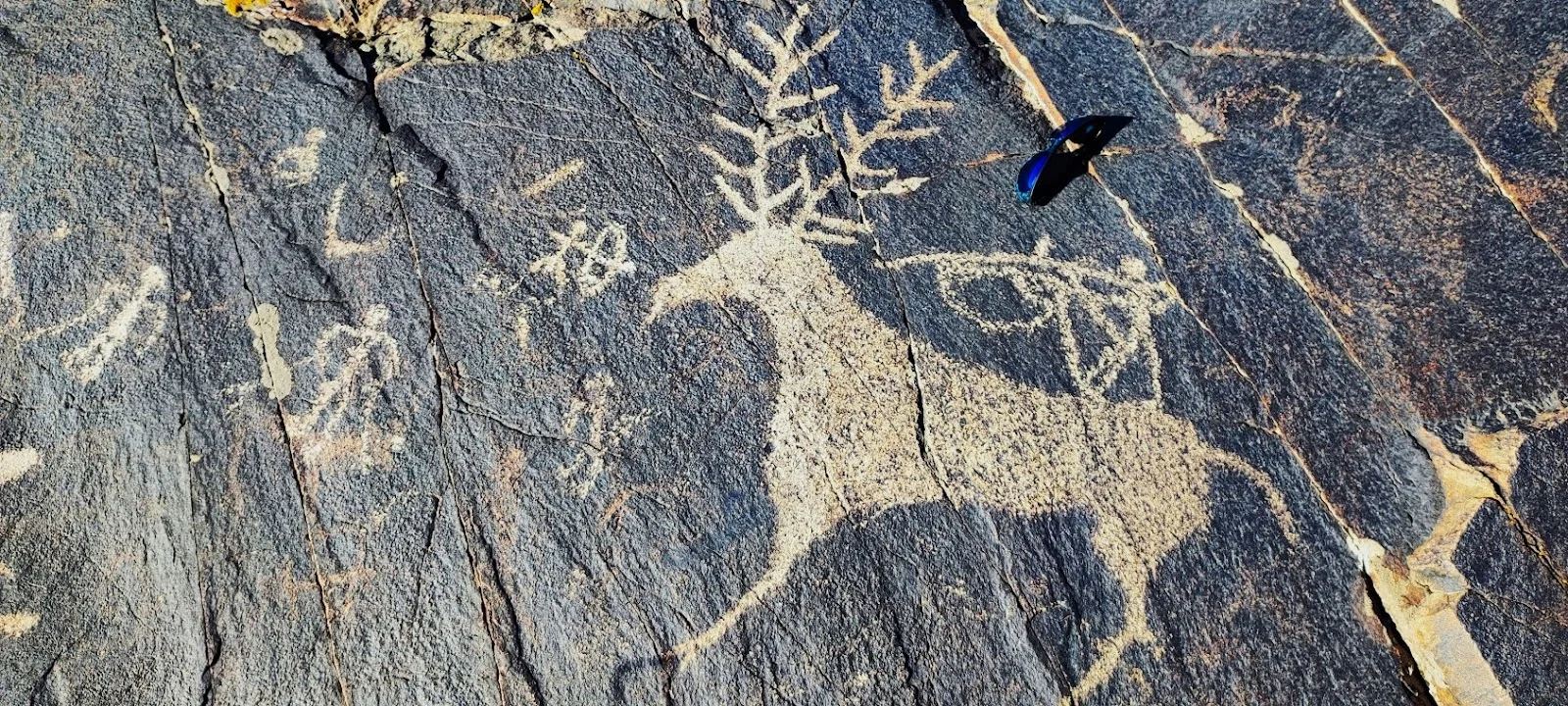
Deer hunting scene/Olga Gumirova
The earliest petroglyphs appeared in Kazakhstan in the Paleolithic period, starting a long tradition of rock art (and information transfer!) that reached its height during the Bronze Age (second millennium BCE to the eighth century BCE). Most of the clusters of rock paintings in Kazakhstan date from this period. Surprisingly, the tradition of carving petroglyphs on rocks has survived into modern times, and these images are now an invaluable historical source.
Ethnographic period petroglyphs, also simply called ‘Kazakh’, are a special layer of our culture, testifying to the continuity of the country’s mythology, as well as the traditions and customs of the tribes and peoples who inhabited the territory of Kazakhstan for several millennia.
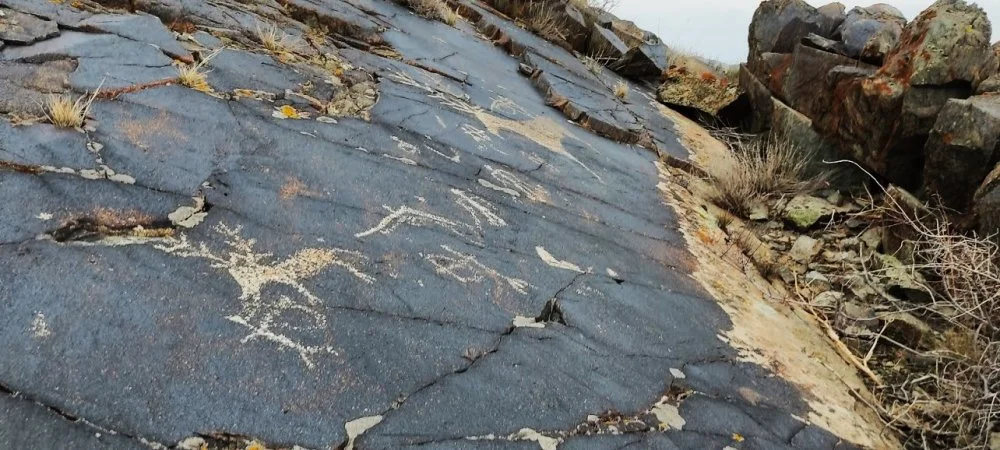
Deer hunting scene/Olga Gumirova
In this sense, the petroglyph of a deer hunt in Ordakul, in the Dauylbai Mountains in Jetisu, carved on a huge rock face over a well-trodden path leading through a pass from the inter-mountain valley to the central sanctuary, is very telling. This route is still popular with shepherds and hunters, and even today, herds of mountain goats still graze in the area just as they did when the carving was made thousands of years ago.
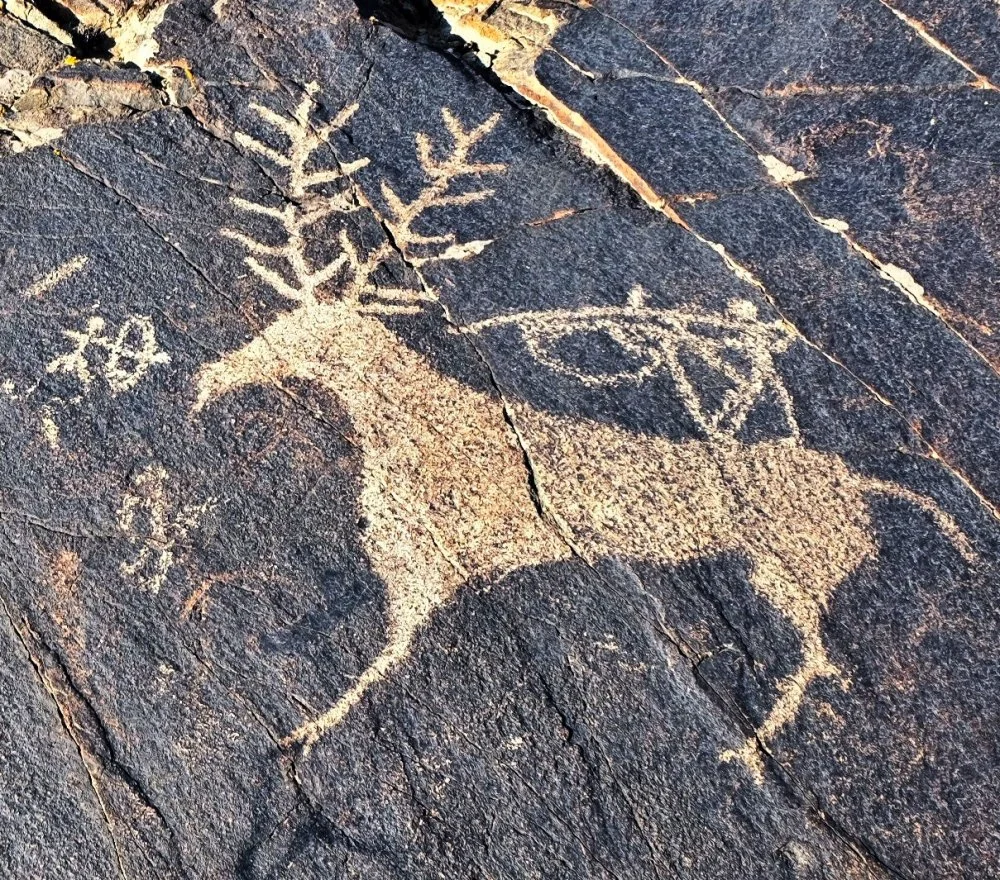
Deer hunting scene. Ordakul/Olga Gumirova
The carving is based on a composition dating back to the Bronze Age, and it was updated and supplemented with new figures in later eras. The last figures to be etched on this epic canvas were a brave hunter with a gun on a bipod and another with a rifle.

A hunter with a bipod. Deer hunting scene. Ordakul. Drawing/Olga Gumirova
A bipod is a stabilizing device used to support a gun on a surface, allowing for more accurate aim. In the scene in Ordakul, we see a bipod with two legs, which is a design that has been in use for centuries. The earliest bipods were used with hand cannons in the twelfth century, but this is obviously not the case here. Two-legged bipods were first used with rifles across the globe in the mid-nineteenth century. According to various ethnographers, they appeared in Kazakhstan at about the same time and were certainly in use in the early twentieth century.

View of the pass through which the trail passes from the central sanctuary/Olga Gumirova
The original scene from Ordakul depicts a dramatic moment in a deer hunt, and there is an interesting change in its interpretation over time. The Bronze Age artist may have depicted a scene from an unknown myth about the ritual hunting of a sun deer, while the later Kazakh artist most likely depicted a personal hunting success or possibly an incantation for hunting luck.
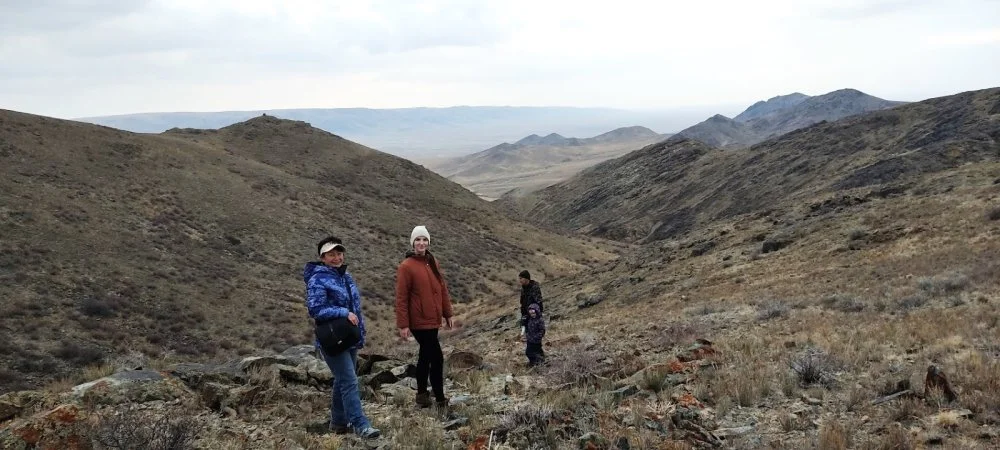
Petroglyph hunters return from hunting/Olga Gumirova
It is remarkable that an unknown artist from the late nineteenth or early twentieth century not only masterfully inscribed his own work into the ancient scene without disturbing the composition, but also neatly refreshed the figures of archers and other figures of the Bronze Age and early Iron Age. This act seems to emphasize his understanding of the fact that despite the millennia separating them, both artists had the same goal. All in all, his work symbolizes the universal understanding and consensus among hunters of all times and nations.
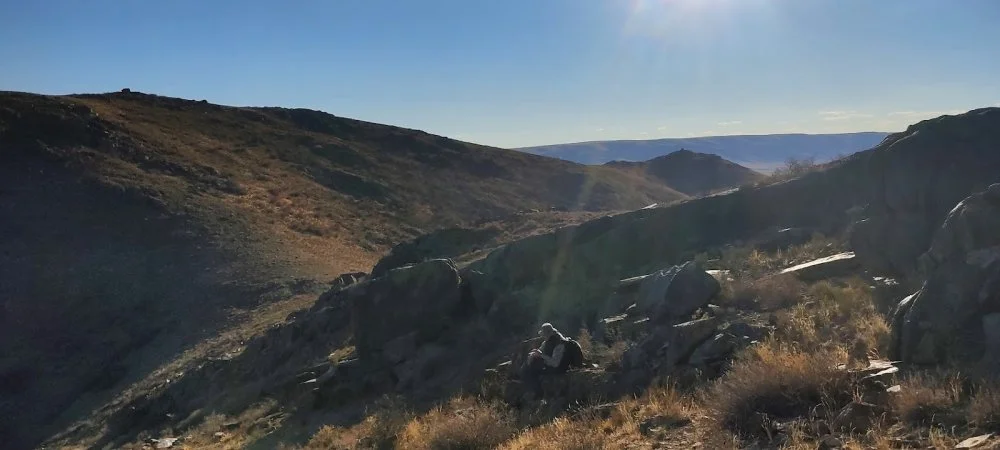
View of the pass from the top of the hill/Olga Gumirova



